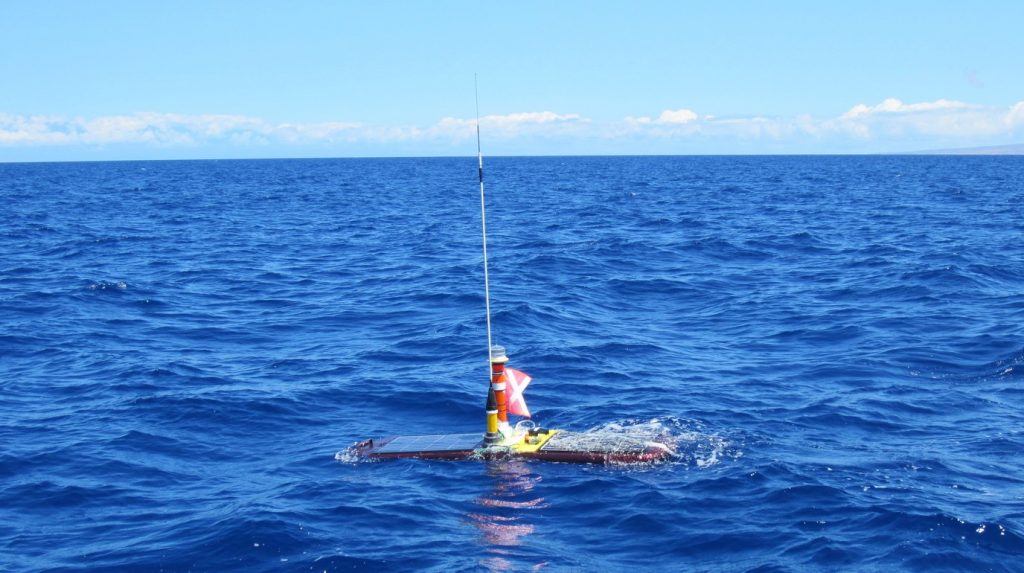(Source: Southgate ARC)
David, AA6YQ, author of DXLab – ‘Better DXing Through (Free) Software’, posted the following: ‘Jupiter Research Foundation Amateur Radio Club (JRFARC) has integrated an HF transceiver with an autonomous ocean-going drone. Our mission is to deploy a ham radio station that roams the world’s oceans while providing an opportunity for amateur radio operators everywhere to make contacts with rare locations.’
“We sent this new Voyager out to the open ocean on its way to California on January 15th, 2018 as a passenger on the JRF HUMPACs mission. As they search for ‘missing’ humpback whales, JRF’s pilots will guide HF Voyager to sections of the Equatorial North Pacific that are not normally available to ham operators. The station will use FT8 and PSK-31 on the 20 meter band as its primary operating modes. You may also find it using WSPR in times of poor propagation.”
See http://www.jrfarc.org/hf-voyager/
The portal in http://hfvportal.jrfarc.org/ takes a minute or two to display data.
The club plans to give a certificate of recognition to operators world-wide that have a confirmed contact with the HF Voyager. In the future we hope to collaborate with Amateur Radio organizations and publishers to sponsor operating events and contests for HF Voyager contact milestones.
Gridsquare collectors, maritime operating fans, Islands on the Air participants, and all other hams interested in this unique opportunity to make a contact with an autonomous roving maritime station should find this to be an exciting new aspect of their favorite hobby.
Be sure to check out our HF Voyager Blog for updates and schedules:
http://www.jrfarc.org/hf-voyager-updates
I think this is a pretty fascinating project–especially if the system can withstand the rigors of ocean travel and can be tracked and picked up later for replacement and upgrades.
I had never spent much time on the HF digital modes until last year when I caught the FT8 bug. While FT8 lacks some of the social nuances of, say SSB voice and CW, it is a fascinating mode that seems to defy HF propagation rules. It’s certainly an accessible way to work HF stations across the globe with a very modest setup. I think it’s an ideal pairing for a project like the HF Voyager.
Even if you don’t have a ham radio license, with an HF receiver and a free PC application, you can receive/decode FT8 contacts from across the globe.
from dx news http://ift.tt/2FK82Lf
via IFTTT




No comments:
Post a Comment